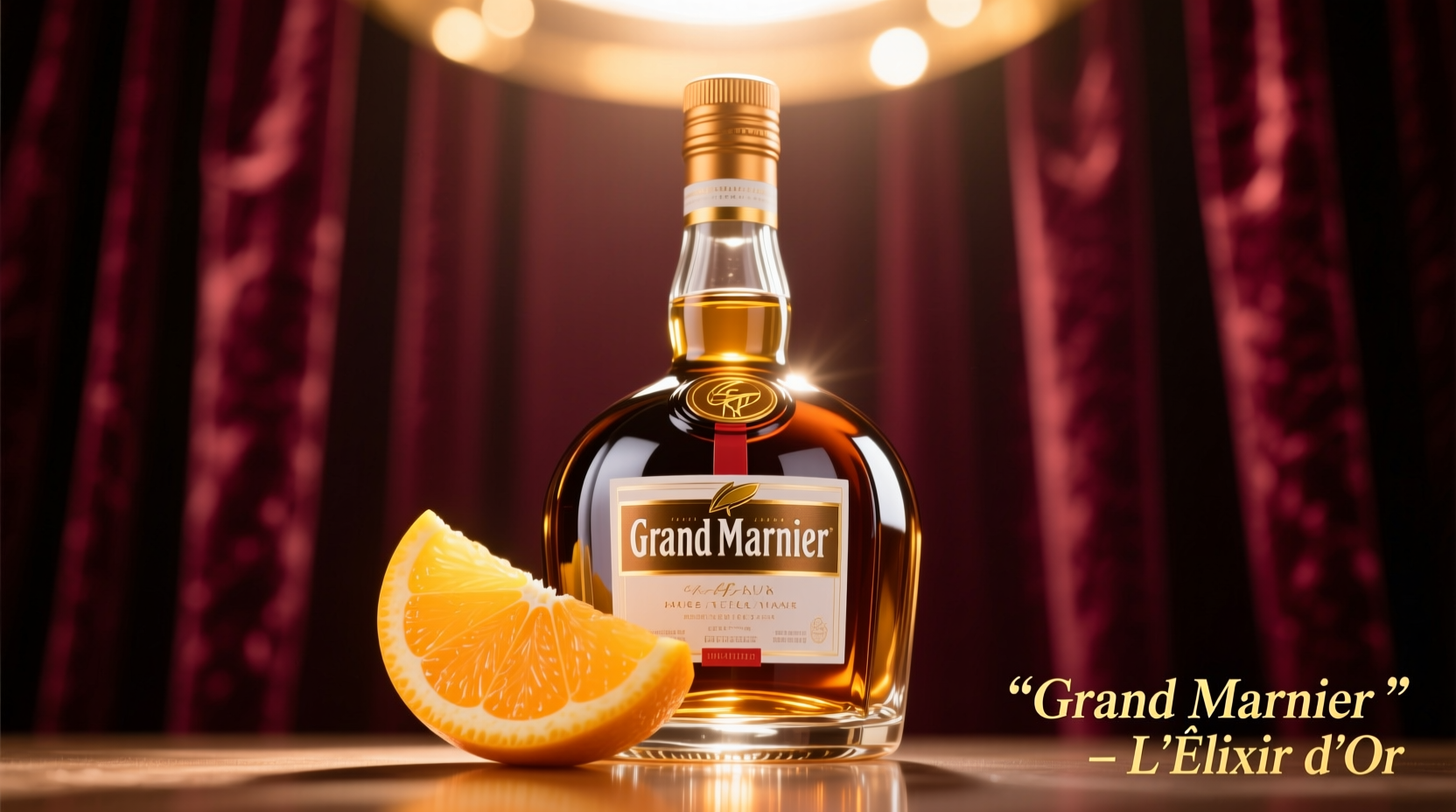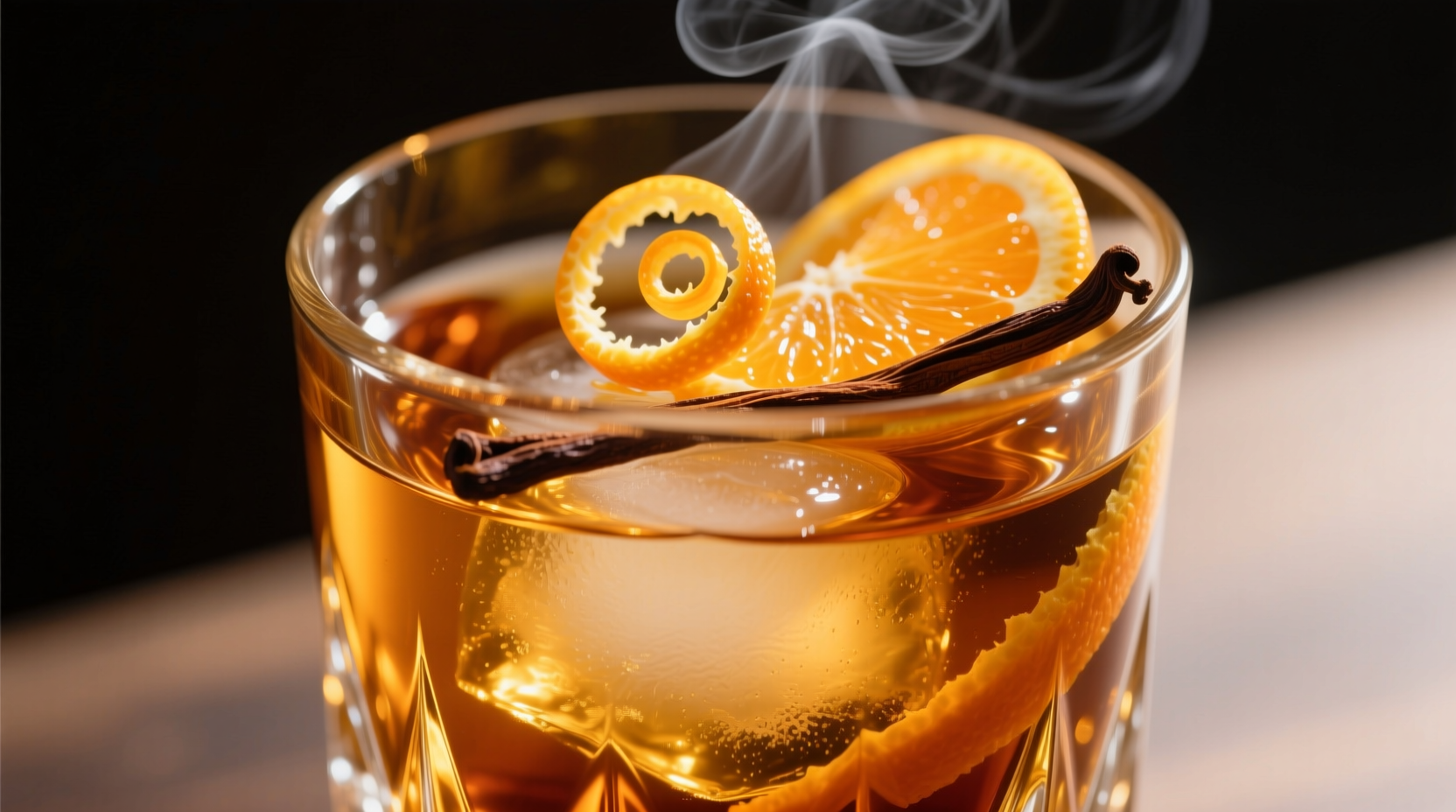If you've ever wondered what makes Grand Marnier stand out among orange liqueurs, you're not alone. This iconic French spirit has captivated palates for over 150 years with its distinctive flavor profile that's more complex than your average orange liqueur. Understanding exactly what does Grand Marnier taste like can help you appreciate it properly and use it effectively in cocktails or cooking.
The Signature Flavor Components of Grand Marnier
When you take your first sip of Grand Marnier, several distinct flavor elements emerge in sequence:
- Initial impression: Bright, natural orange flavor (from bitter Bigaradia oranges) that's citrusy but not artificially sweet
- Middle notes: Rich cognac base that provides warmth and depth, distinguishing it from neutral spirit-based orange liqueurs
- Finish: Subtle vanilla, light spice, and a balanced sweetness that lingers pleasantly without overwhelming
Unlike many mass-produced orange liqueurs that rely on artificial flavorings, Grand Marnier's taste comes from a careful distillation process using both the peel and juice of specific bitter orange varieties. The addition of fine cognac (about 35% of the blend) creates a complexity that makes what Grand Marnier tastes like fundamentally different from competitors.
How Production Creates That Distinctive Taste
The specific production method directly influences how Grand Marnier tastes. While most orange liqueurs use neutral grain spirits, Grand Marnier's foundation is Cognac—a grape-based spirit aged in oak barrels. This gives it:
- Natural wood notes from the cognac aging process
- Greater viscosity and mouthfeel
- Layered complexity that evolves as it sits on your palate
The oranges used in Grand Marnier are specifically Bigaradia bitter oranges grown in Haiti, Colombia, and Brazil. These particular oranges contain higher levels of essential oils in their peels, which creates that distinctive aromatic quality when distilled. The careful balance between sweet and bitter orange elements is what gives Grand Marnier its sophisticated profile rather than a one-dimensional orange flavor.
| Liqueur Type | Base Spirit | Orange Flavor Profile | Alcohol Content | Best Used For |
|---|---|---|---|---|
| Grand Marnier | Cognac (aged) | Complex bitter-sweet with vanilla notes | 40% ABV | Sipping, premium cocktails, desserts |
| Cointreau | Neutral grain spirit | Clean, bright sweet orange | 40% ABV | Cocktails requiring pure orange flavor |
| Triple Sec | Neutral grain spirit | Simpler, sweeter orange | 15-20% ABV | Budget cocktails, mixed drinks |
Experiencing Grand Marnier: How Temperature and Context Change the Taste
The answer to what does Grand Marnier taste like actually varies depending on how you consume it:
Sipping Neat
At room temperature, Grand Marnier reveals its full complexity. The cognac base becomes more apparent, with subtle oak notes emerging alongside the orange. Many first-time tasters notice how the bitterness of the orange peel balances the sweetness, creating a sophisticated profile that's surprisingly dry for a liqueur.
In Cocktails
When mixed in cocktails like the Sidecar or Cosmopolitan, Grand Marnier contributes both citrus and spirit depth. Unlike Triple Sec which primarily adds sweetness and orange flavor, Grand Marnier brings additional layers that interact with other ingredients. In a margarita, for example, it creates a more complex drink with subtle warmth from the cognac base.
In Cooking and Baking
Chef Sophie Dubois notes: "When used in cooking, Grand Marnier's flavor transforms beautifully. The alcohol burns off while the complex orange-cognac essence remains, enhancing desserts like crêpes Suzette or chocolate sauces with a depth that cheaper orange liqueurs can't match." The volatile citrus oils interact with heat differently than artificial flavors, creating more nuanced results.

What First-Time Tasters Should Expect
If you're experiencing Grand Marnier for the first time, here's what to anticipate when exploring what Grand Marnier tastes like:
- Appearance: Rich amber color (unlike the clear appearance of most orange liqueurs)
- Nose: Distinct orange blossom aroma with underlying cognac warmth
- Palate: Initial sweetness that quickly balances with subtle bitterness
- Mouthfeel: Slightly viscous from the cognac content
- Finish: Warm, lingering with notes of orange peel and oak
Many people expect an intensely sweet, candy-like orange flavor based on other orange liqueurs they've tried. The sophisticated balance of Grand Marnier often surprises first-time tasters with its relative dryness and complexity. As professional mixologist James Usborne explains in Difford's Guide, "Grand Marnier's magic lies in how the cognac base supports rather than competes with the orange flavor, creating harmony rather than a single-note experience."
Practical Tips for Appreciating Grand Marnier's Flavor
To fully experience what Grand Marnier tastes like, try these approaches:
- Temperature matters: Slightly chilled (not ice-cold) reveals more flavor complexity
- Use proper glassware: A snifter or tulip glass concentrates the aromas
- Let it breathe: Allow 30 seconds after pouring for the aromas to develop
- Compare side-by-side: Taste alongside Cointreau to notice the cognac difference
- Food pairing: Try with dark chocolate to highlight the vanilla notes
Understanding the nuanced answer to what does Grand Marnier taste like transforms how you use this versatile spirit. Whether you're crafting cocktails, enhancing desserts, or simply enjoying it as a digestif, recognizing its distinctive flavor profile helps you appreciate why this orange liqueur has remained a premium choice since 1880.











 浙公网安备
33010002000092号
浙公网安备
33010002000092号 浙B2-20120091-4
浙B2-20120091-4